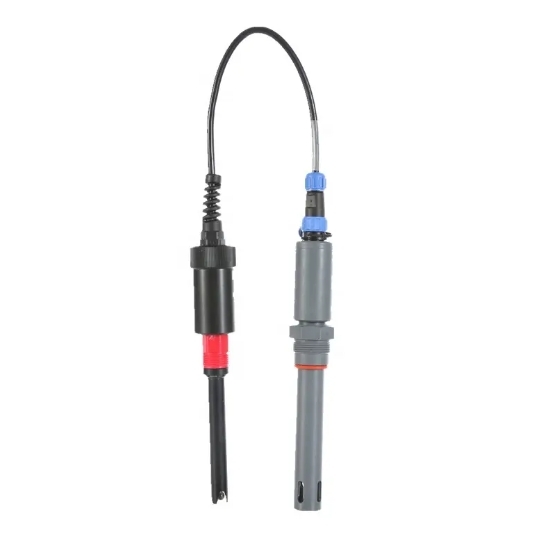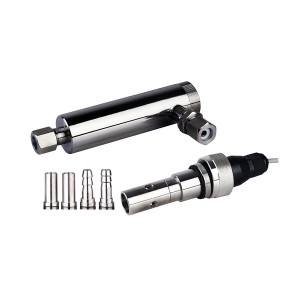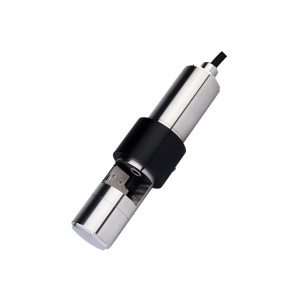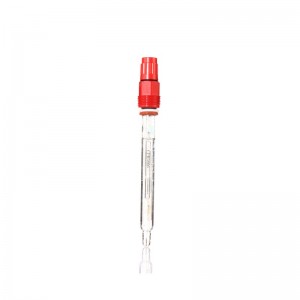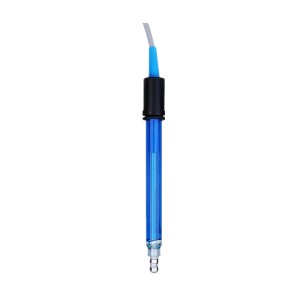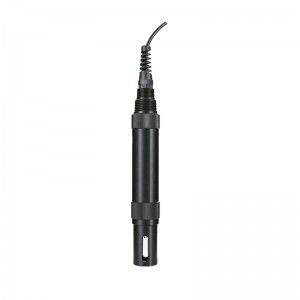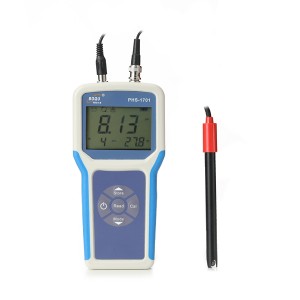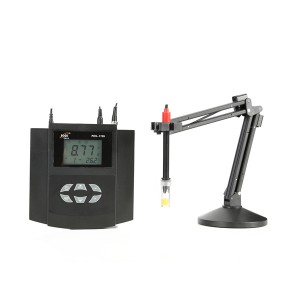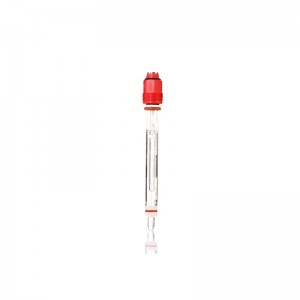Chlorine is a widely used chemical in various industries, especially in water treatment, where it plays a critical role in disinfecting water for safe consumption. To ensure the effective and efficient use of chlorine, monitoring its residual concentration is crucial. This is where the digital residual chlorine sensor, Model No: BH-485-CL, comes into play. Developed by Shanghai BOQU Instrument Co., Ltd., this innovative sensor offers a cutting-edge solution for monitoring chlorine levels in real time.
Case Study 1: Water Treatment Plant — High-Performance Chlorine Sensor
1. Background — High-Performance Chlorine Sensor
A water treatment plant in a bustling urban area was responsible for providing clean and safe drinking water to a large population. The plant used chlorine gas to disinfect the water supply, but accurately measuring and controlling the chlorine levels was a significant challenge.
2. Solution — High-Performance Chlorine Sensor
The plant incorporated chlorine sensors from Shanghai BOQU Instrument Co., Ltd. to monitor chlorine concentrations in real time. These sensors provided accurate and continuous data, allowing the operators to make precise adjustments to the chlorine dosing system.
3. Results — High-Performance Chlorine Sensor
By using chlorine sensors, the water treatment plant achieved several benefits. First, they were able to maintain a consistent and safe chlorine concentration in the water supply, ensuring that it met regulatory standards. Second, they reduced chlorine consumption, leading to cost savings. Overall, the plant significantly improved its water disinfection process and increased operational efficiency.
Case Study 2: Swimming Pool Maintenance — High-Performance Chlorine Sensor
1. Background — High-Performance Chlorine Sensor
Swimming pool maintenance is a critical aspect of ensuring a safe and enjoyable swimming experience. Chlorine is commonly used to disinfect pool water, but excessive chlorine levels can cause skin and eye irritation for swimmers.
2. Solution — High-Performance Chlorine Sensor
A swimming pool maintenance company integrated chlorine sensors into their water treatment systems. These sensors constantly monitored chlorine levels and automatically adjusted the chlorine dosing to maintain optimal levels, thus ensuring swimmers’ comfort and safety.
3. Results — High-Performance Chlorine Sensor
With chlorine sensors in place, the pool maintenance company improved water quality while reducing chlorine consumption. Swimmers reported fewer instances of skin and eye irritation, resulting in increased customer satisfaction and repeat business.
Chlorine Sensor Troubleshooting: Common Issues and Solutions
Introduction — High-Performance Chlorine Sensor
While chlorine sensors can be invaluable tools, like any technology, they may encounter issues that need to be addressed. Let’s explore some common problems that users may encounter with chlorine sensors and their solutions.
Issue 1: Sensor Calibration Problems
Causes
Calibration is crucial for accurate measurements, and if a chlorine sensor is not calibrated correctly, it can provide inaccurate readings.
Solution
Regularly calibrate the chlorine sensor according to the manufacturer’s instructions. Ensure that the calibration solutions are fresh and stored correctly. If the problem persists, contact the manufacturer’s technical support for guidance.
Issue 2: Sensor Drift
Causes
Sensor drift can occur due to environmental changes, chemical interactions, or sensor aging.
Solution
Regularly perform routine maintenance and calibration to minimize drift. If the drift is significant, consider replacing the sensor with a new one. Additionally, consult the sensor manufacturer for advice on minimizing drift through proper sensor placement and maintenance.
Issue 3: Sensor Fouling
Causes
Sensor fouling can occur when the sensor’s surface becomes coated with contaminants or debris, affecting its performance.
Solution
Regularly clean the sensor’s surface according to the manufacturer’s recommendations. Implement filtration or pre-treatment systems to reduce the impact of contaminants. Consider installing a sensor with a self-cleaning mechanism for long-term solutions.
Issue 4: Electrical Problems
Causes
Electrical issues can affect the sensor’s ability to transmit data or power on.
Solution
Check the electrical connections, wiring, and power supply to ensure they are functioning correctly. If the problem persists, contact a qualified technician to diagnose and fix the issue.
Issue 5: Sensor Drift
Causes
Sensor drift can occur due to environmental changes, chemical interactions, or sensor aging.
Solution
Regularly perform routine maintenance and calibration to minimize drift. If the drift is significant, consider replacing the sensor with a new one. Additionally, consult the sensor manufacturer for advice on minimizing drift through proper sensor placement and maintenance.
Application Across Diverse Settings
The BH-485-CL digital residual chlorine sensor finds applications in a range of settings, making it a versatile and indispensable tool for those responsible for water quality management. Here are some key areas where this sensor is employed:
1. Drinking Water Treatment: Ensuring the safety and quality of drinking water is a top priority for water treatment plants. This digital sensor allows operators to continuously monitor and control the residual chlorine content, maintaining a consistent disinfection level.
2. Swimming Pools: Chlorine is a key component in maintaining the hygiene of swimming pool water. The digital residual chlorine sensor facilitates precise chlorine control, ensuring that pool water remains safe and inviting for swimmers.
3. Spas and Health Clubs: Spas and health clubs rely on clean water to provide a relaxing and enjoyable experience for their patrons. The sensor helps maintain chlorine levels within the desired range, promoting a healthy environment.
4. Fountains: Fountains are not only aesthetic features but also require chlorine treatment to prevent algae growth and maintain water quality. This sensor enables automated chlorine dosing for fountains.
Technical Features for Reliable Performance
The BH-485-CL digital residual chlorine sensor is packed with advanced features that ensure its reliability and effectiveness in real-world applications:
1. Electrical Safety: The sensor’s isolation design of power and output guarantees electrical safety, preventing potential hazards in the system.
2. Protection Circuit: It incorporates a built-in protection circuit for power supply and communication chips, reducing the risk of damage or malfunction.
3. Robust Design: The comprehensive protection circuit design enhances the sensor’s robustness, making it resilient against various environmental factors.
4. Ease of Installation: With built-in circuitry, this sensor is easy to install and operate, saving valuable time and resources.
5. Remote Communication: The sensor supports RS485 MODBUS-RTU communication, enabling two-way communication and remote instructions, making it convenient for remote monitoring and control.
6. Simple Communication Protocol: Its straightforward communication protocol simplifies the integration of the sensor into existing systems, minimizing complexity for users.
7. Intelligent Output: The sensor outputs electrode diagnostic information, enhancing its intelligence and making it easier to identify and address issues.
8. Integrated Memory: Even after a power outage, the sensor retains stored calibration and setting information, ensuring consistent performance.
Technical Parameters for Accurate Measurement
The technical specifications of the BH-485-CL digital residual chlorine sensor are designed to provide precise and reliable measurements:
1. Chlorine Measurement Range: The sensor can measure chlorine concentrations ranging from 0.00 to 20.00 mg/L, covering a broad spectrum of applications.
2. High Resolution: With a resolution of 0.01 mg/L, the sensor can detect even small changes in chlorine levels.
3. Accuracy: The sensor boasts an accuracy of 1% Full Scale (F.S.), ensuring reliable measurements within the specified range.
4. Temperature Compensation: It can function accurately in a wide temperature range from -10.0 to 110.0°C, making it suitable for various environmental conditions.
5. Durable Build: The sensor features an SS316 housing and a platinum sensor, utilizing the three-electrode method for longevity and corrosion resistance.
6. Easy Installation: It is designed with a PG13.5 thread for easy on-site installation, reducing installation complexity.
7. Power Supply: The sensor operates on a 24VDC power supply, with a power supply fluctuation range of ±10%. Additionally, it offers 2000V isolation, enhancing safety.
Conclusion
In conclusion, the BH-485-CL digital residual chlorine sensor from Shanghai BOQU Instrument Co., Ltd. is a state-of-the-art solution for real-time monitoring and control of chlorine levels in various applications. Its versatility, technical features, and reliable performance make it an essential tool in ensuring water safety, whether in drinking water treatment, swimming pools, spas, or fountains. With its advanced capabilities, this digital sensor is set to play a pivotal role in maintaining water quality and safeguarding public health. If you’re looking to enhance your water treatment processes, the BH-485-CL is certainly worth considering.
Post time: Nov-15-2023

